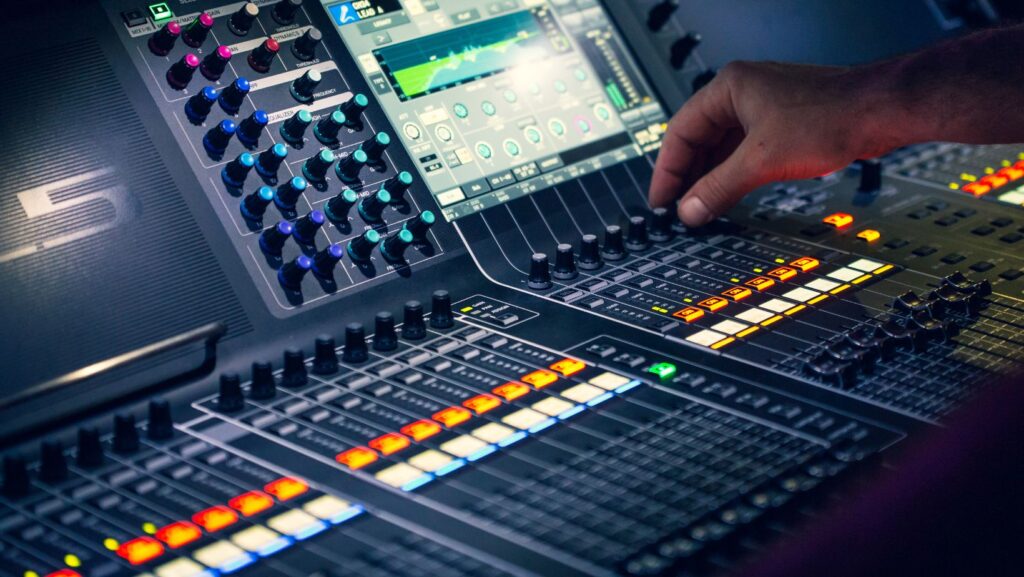In both documentaries and entertainment, sound plays a crucial role in enhancing the realism of a scene, especially when depicting environments that are not easily accessible or typically heard by the human ear. Underwater environments are an excellent example of this, as the unique acoustic properties of water create a distinct set of challenges for sound designers. Professional sound effects (SFX) used to simulate underwater environments are an essential tool in the arsenal of filmmakers, helping to transport audiences into the depths of the ocean or other bodies of water. The process involves a complex mix of techniques, creativity, and technical knowledge, all aimed at immersing the viewer in the sensory experience of underwater life, even though the sounds themselves are a simulation. Let’s explore how these sound effects are crafted and utilized in the context of both documentaries and entertainment.
The Acoustic Characteristics of Underwater Environments
To understand how professional sound effects simulate underwater environments, it’s important first to recognize the unique acoustic properties of water. Sound travels much faster in water than in air, at approximately 1,500 meters per second, compared to 343 meters per second in air. This difference in speed affects how sounds are perceived underwater. Additionally, sound waves in water lose energy quickly, so low-frequency sounds tend to dominate in underwater acoustics. These low-frequency sounds travel farther, while high-frequency sounds tend to dissipate much more rapidly.
Furthermore, the behavior of sound waves underwater is influenced by factors like depth, water temperature, salinity, and the type of medium (saltwater vs. freshwater). These elements create an environment where human ears, and consequently microphones, are not naturally equipped to capture sounds in their full depth and complexity.
The Role of Sound Effects in Simulating Underwater Soundscapes
In filmmaking, sound designers work to bridge the gap between these unique underwater acoustic properties and the medium of film, which typically relies on air-based sound recordings. To create the experience of being submerged in water, a combination of techniques is used to simulate how the human ear would perceive sounds in such an environment. Sound effects play a key role in establishing an underwater atmosphere and enhancing the realism of underwater scenes in both documentaries and entertainment content.
Key Sound Effects Techniques for Underwater Simulation
-
Recording Low-Frequency Sounds
Since underwater acoustics are dominated by low-frequency sounds, one of the first techniques sound designers employ is the manipulation of frequencies. Low-frequency sounds—such as the rumble of different types of animals, underwater currents, or even distant ship hulls—are captured and emphasized. Often, these low-end rumbling sounds are enhanced artificially, sometimes by using subwoofers or bass-heavy elements to recreate the natural underwater low-frequency resonance that would otherwise be difficult to capture.
-
Utilizing Water-Based Sound Sources
In some cases, sound designers use real-world underwater recordings to create authentic sound effects. To achieve this, microphones designed for underwater use are placed in real underwater settings to record natural sounds.

For example, the sound of a whale’s song, the movement of fish through the water, or the creaking of a ship’s hull can be recorded underwater with hydrophones. However, this approach has limitations in terms of control over the soundscape. Thus, for specific effects, sound designers will also use water-based sound effects created through more controlled means.
-
Simulating Muffled and Distant Sounds
One of the most notable effects in underwater environments is the sense of muffling or dullness of sound. This is because sound waves must travel through water, which is denser than air and, thus, filters high-frequency sounds. To simulate this, sound designers use various techniques, including applying filters that cut off high frequencies, leaving only mid-range and low frequencies. The resulting sound is “muddier” than what is typically heard in air.
For example, the sound of someone talking underwater or the distant noise of a boat engine will be dramatically muffled compared to what one would hear on land. Sound designers often add effects like reverb and delay to give a sense of distance and dampening, which are common when objects are submerged.
-
Creating Synthetic Underwater Sounds
For scenarios where real underwater sound recordings are not available or practical, sound designers often turn to synthetic sound effects. These are often produced using a variety of creative techniques, such as manipulating existing sounds. For instance, the sound of bubbles may be produced by recording the sound of air escaping from a bottle or a balloon. Similarly, the sound of fish or aquatic creatures swimming may be simulated by manipulating the sound of objects moving through water or by using materials like rubber or plastic to mimic the movement of underwater life.
-
Layering Sounds to Build a Rich Soundscape
Underwater environments are never silent, so sound designers will often layer multiple sound effects to build a rich, immersive soundscape. A scene in which a diver explores a coral reef might include a variety of sounds: the faint hum of ocean currents, the clicks and whistles of underwater creatures, the occasional distant whale song, and the noise of bubbles or air tanks. By blending these sounds, sound designers create a cohesive and dynamic environment that transports the viewer beneath the surface of the water.
-
Using Ambience and Environmental Sounds
In addition to sounds that emanate from underwater creatures, designers also focus on the ambient soundscape of the environment. This includes the subtle sounds of water moving, the distant rumble of underwater volcanic activity or tectonic shifts, or the sound of objects scraping along the ocean floor. These background sounds help give a sense of scale and realism to underwater scenes. When applied thoughtfully, these elements can evoke a sense of awe and mystery, essential to engaging the audience’s emotions in underwater-themed films and documentaries.
-
Post-Production Effects and Manipulation
Once the sound effects are recorded, sound designers can further manipulate the audio in post-production. This includes techniques like time stretching, pitch shifting, and reverb application, all aimed at refining the soundscape.

For instance, by lowering the pitch of a sound or adding long, drawn-out reverbs, the designer can simulate the way sound bends and distorts as it travels through water. Likewise, digital effects allow for the creation of supernatural or fantasy sounds, like alien creatures or underwater cities, which are often seen in entertainment.
Sound Effects in Underwater Documentaries vs. Entertainment
The use of sound effects in underwater documentaries focuses primarily on realism and authenticity. Documentaries aim to depict the natural world as accurately as possible, so the sound design often strives to capture the natural sounds of underwater environments with minimal manipulation. While the soundscape is crafted for the audience, the goal is to preserve the integrity of the underwater world as closely as possible.
In contrast, underwater sound effects in entertainment—such as in action films, science fiction, or fantasy movies—tend to be more stylized. Filmmakers may take creative liberties with how underwater sounds are portrayed, enhancing the dramatic tension or fantastical elements of the story. In these cases, sound design may employ exaggerated or heightened sounds to emphasize a mood or create an otherworldly atmosphere.
Conclusion
The use of professional sound effects to simulate underwater environments is a delicate art that requires a balance of technical expertise and creative imagination. Sound designers must understand the unique properties of water and how sound behaves in it to effectively craft immersive underwater soundscapes. Through a combination of low-frequency emphasis, synthetic sound creation, and manipulation of environmental sounds, they can transport audiences into these mysterious, often otherworldly realms. Whether in the realistic and informative tones of a documentary or the dramatic flair of a fantasy film, underwater sound effects are an essential tool for telling stories that happen beneath the surface.


